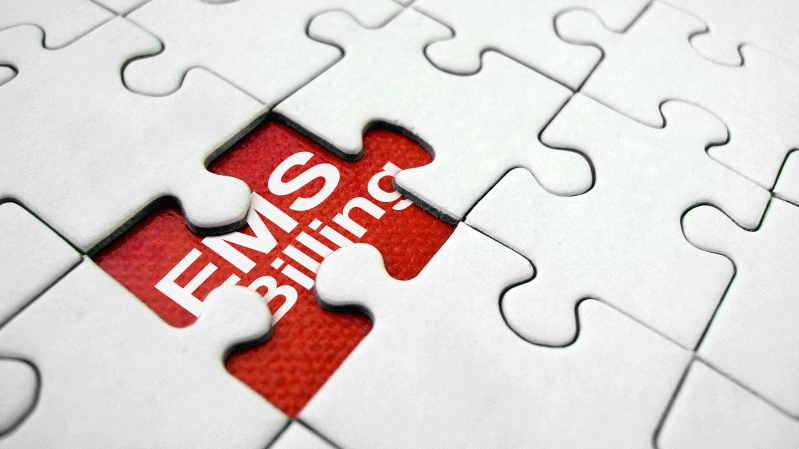The Puzzle EMS Billing Has Become
The missing piece…
Have you ever put together a puzzle and found near the end that you are missing a piece or two? It’s frustrating; isn’t it?
 You have just enough of the pieces put together that you can see the picture you are creating and yet those key missing pieces place a strategic hole in the middle of your masterpiece so much so that you are unable to enjoy the beautiful image you are attempting to re-create.
You have just enough of the pieces put together that you can see the picture you are creating and yet those key missing pieces place a strategic hole in the middle of your masterpiece so much so that you are unable to enjoy the beautiful image you are attempting to re-create.
EMS billing is very similar.
Holes- all sizes and shapes
Just like that missing puzzle piece or two, it’s frustrating for your EMS billing office to begin to process a claim for payment only to find that there are holes in the documentation needed to be retained on file to support billing the claim to the appropriate payer source.
Sometimes the missing pieces to the documentation puzzle are huge- poorly written Patient Care Report (PCR) narratives, missing signatures, missing documentation like Physician Certification Statements (PCS’s), for example.
Other times the missing piece seems small but yet is probably larger than you think. When parts like legible signatures, odometer readings to support loaded mileage billing, dates and things like that are missing it’s a big nuisance.
Gaping Holes in the Puzzle
The number one element of documentation is a properly written and well prepared PCR written narrative. In today’s day and age with Medicare, Medicaid and even Commercial Payers conducting more and more audits to justify payment than at any other time in our industry’s history, it’s vital that your written narrative be completed with as much detail regarding your EMS scenario as possible. Leave no stone unturned. Answer all questions with values and numbers, plus provide clear clinical documentation to support the claim that will be billed following the run.
If your run is a non-emergency, then you must obtain a PCS from a health care professional- preferably a doctor. If the PCS itself is missing, when billing to Medicare, the billing process won’t even begin. There’s just no way around it.
Of course, other elements such as vital signs and even patient demographics set the billing and payment loop in motion toward a successful and well-supported outcome.
The Missing Small Pieces
How about those small items that loom large after the fact?
Consider that PCS, for example. It is extremely important that certain key elements be included on the PCS form that your EMS agency uses. While it may seem that missing one little part would be forgiven by the payer, that is no longer the case.
Set your mind to the fact that there are rules and the people on the other end of the table who review and ultimately pay these claims have to abide by a strict adherence to those rules. There’s no “wiggle room.”
If the date of the trip is missing on the form, the entire claim will be rejected. If the doctor or nurse signing off on the PCS signs using a signature that appears to be from outer space, then the PCS will be rejected unless that health professional’s name is printed near the signature along with his/her credentials. If there is no date listed on the PCS clearly indicating when the health professional actually signed the form, again it will be rejected.
The PCS is just one example of the little things that, when missing, drive us crazy here at the billing office.
Attention to Detail
We don’t know the individual tasks that are handed out at your EMS agency, but we can tell you that there should be a few layers of responsibility to assure that the correct information is being obtained by your EMS agency. The people listed below must step up to the plate to find the puzzle pieces.
Call Intake can be an important check and balance right from the start. Here’s where the run begins, so if you’re part of that area of your agency be sure you know what to ask for and how to instruct the caller to obtain what you’ll need prior to patient pick-up.
EMS Providers are most important. Much of the EMS documentation puzzle pieces are going to be created by the street providers. The PCR you create must paint a picture in words regarding your scenario and pain it adequately to spell out the medical necessity and reasonableness of your EMS run.
QA/QI and/or Administrative persons are vital to insure that all the pieces of the puzzle are in place before the documentation moves to the billing office. Here’s where vital feedback, oversight and even education can ward off gaping holes in the documentation puzzle.
Billing Office staff members must be sharp and educated to the role they play. Whether your bill in-house or outsource (always the best choice) to a professional company, these people must know how to critically review the resulting puzzle for correctness. No short cuts can be made and no missing piece allowed to remain displaced.